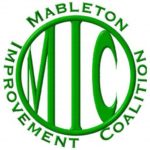As has been widely reported, Cobb County School District is providing families with the choice of remote or face-to-face learning for students in the 2020-21 school year. To understand the impact this has on our community, MIC’s Education Committee Chair Nate Smith has dug into the numbers to understand and explain the situation facing students in our community. Here is a summary of his report. Read the full report here.
Mableton students continue to need local community and business support in the effort to bridge the Digital Divide. Support is needed in the form of monetary donations and volunteer support on School Councils and School Foundations. Our local school principals are excellent and encourage community involvement. It is critical that school choice data is gathered quickly to help guide actions steps CCSD and the community need to implement, which includes increased parental engagement, working with local PTSA’s, School Councils and School Foundations.
This assessment is based on school choice data provided by CCSD Superintendent Ragsdale’s Sept. 28 posting titled “CCSD Gives Families Choice and Flexibility” https://www.cobbk12.org/_ci/p/32666/ccsd-gives-families-choice-and-flexibility. Based on a review of the school choice data, it is clear that as a community we will need to allocate additional time and resources to schools in Mableton if our students are to realize the “One Team. One Goal. Student Success” mission statement. There are two major areas that require our collective focus and corrective measures: 1) decreasing the “no response” rate on the choice of Face to Face or Full Remote Learning, and 2) ensure that all students have digital devices and reliable connectivity.
Elementary Schools
As a group, Mableton area Elementary Schools account for 11% of Cobb County Elementary School student population, while representing fully 34% of the “No Response” for elementary schools. It is critical that we improve this response rate if we want our elementary school kids to be prepared for school opening on Oct. 5. Sustained and immediate action plans need to be put in place for City View, Riverside and Clay Harmony Leland to understand why “no response” rates are so high vs. the benchmark of 6.1% for all Elementary Schools. A review of successful support efforts in Sanders ES should be conducted to understand what works, and if there is a possibility to incorporate Sanders ES success factors across the other elementary schools.
Middle Schools
The “no response” rate in our Middle Schools in Mableton is more than 3x higher than the response rate for all Cobb County Middle Schools. This variance highlights the need to insure all students will have digital devices and connectivity when Phase 2 of the reopening plan is enacted. According to the re-open schedule, if all goes well, Middle Schools are scheduled to re-open Oct. 19. The school choice data trend in Mableton schools appears to point toward Full Remote Learning, which could lead to a severe shortage of digital devices with the improvement of the “no response” rate for Mableton families.
High Schools
The student population of the two high schools serving Mableton Students represent 13% of Cobb county high school population, and have a 19.9% rate of “No Reponses” regarding family choice of Face to Face or Remote Learning. The combined high “no response” rate is driven dis-proportionately by Pebblebrook HS, where reducing the “no response” is an identified priority for action. The significant 14.1 pp variance at Pebblebrook HS vs. All High Schools “no response” rate requires the full-fledged support and immediate assistance of the local community and CCSD to close this gap and find resources. The “no response” rate in So. Cobb HS at 8.4% is significantly below the benchmark for All High Schools, and reflect a high level of student family choice for Full Remote learning.
For more information about MIC’s Education Committee and how you can help Mableton students, contact Nate Smith, MIC Education Committee Chair.
